Members
 Total Members: 179
Total Members: 179 Latest: Bester
Latest: Bester
Stats
 Total Posts: 1974
Total Posts: 1974 Total Topics: 475
Total Topics: 475 Online Today: 40
Online Today: 40 Online Ever: 262
Online Ever: 262- (April 26, 2024, 05:10:40 am)
Users Online
 Users: 0
Users: 0 Guests: 43
Guests: 43 Total: 43
Total: 43
Introduction
In the second installment of the Beginner Series we will introduce the various models of Amiga.
Summary
There are several models of classic Amiga in three general form factors – keyboard consoles, TV consoles, and the big beige boxes. The Amiga 1000 does not fit easily in any of the categories, and given its special place as the first Amiga it will be mentioned separately.
|
Machine |
Type |
Chipset |
Kickstart |
|
A1000 |
|
OCS |
1.0-1.3 (on disk) |
|
A500 |
Keyboard Console |
OCS (up to rev 5) ECS (rev 6 & 8A) |
1.2 or 1.3 |
|
A500+ |
Keyboard Console |
ECS |
2.04 |
|
A600 |
Keyboard Console |
ECS |
2.05 |
|
A1200 |
Keyboard Console |
AGA |
3.0 or 3.1 |
|
CDTV |
TV Console |
ECS |
1.3 |
|
CD32 |
TV Console |
AGA |
3.1 |
|
A2000 |
Big Beige Box |
OCS (rev 4) ECS (rev 6) |
1.2-2.04 |
|
A3000/ A3000T |
Big Beige Box |
ECS |
1.4 (on hard disk, early 3000s only) 2.04 (on hard disk or chip) |
|
A4000/ A4000T |
Big Beige Box |
AGA |
3.0 or 3.1 |
KS3.1 is available for all Amigas except for the A1000 (unless the A1000 is modified).
Amiga 1000
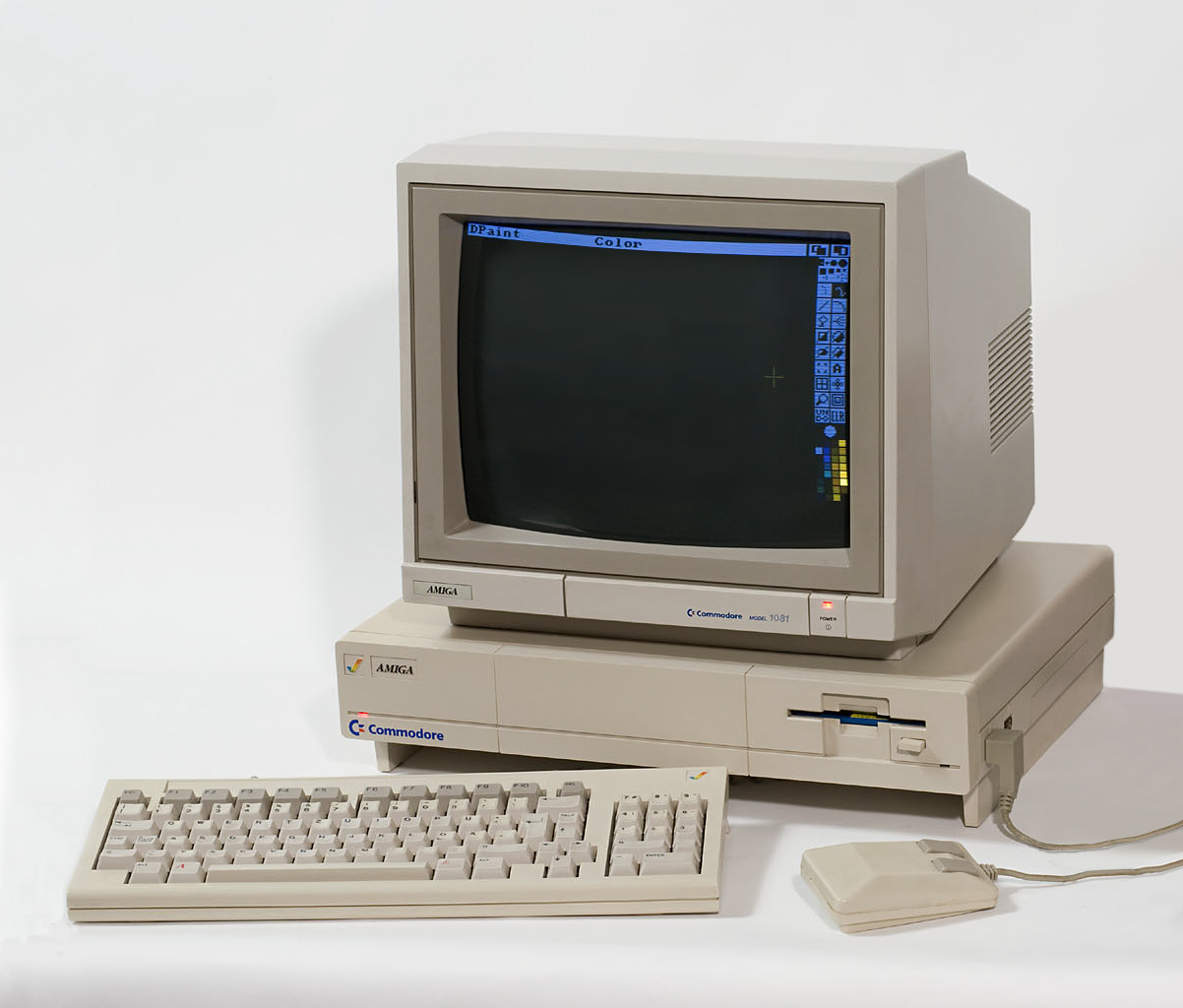
Both portions of the operating system came on disk, with Kickstart needing to be loaded into a special RAM board when the machine is first powered on. This was important at the time because versions 1.0 and 1.1 of the operating system were quite buggy and users needed the ability to upgrade easily. Kickstart disks up to 1.3 were made available for the A1000. There was an expansion port named Zorro on the right hand side of the computer which allowed connection of a PC-XT (Intel 8088) hardware emulator or fast ram expansion. There is no way of booting from a hard disk without significant modification to the motherboard.
While Commodore had problems supplying enough A1000s in the early days, it soon became apparent that the A1000 lacked the expansion options needed to be a serious contender in the business market – businesses would buy IBM instead, but was too expensive as a computer for kids and games – this market was dominated by 8-bit machines such as the Commodore 64, and cheaper 16-bit machines like the Atari ST. The result was that two different Amiga lines were born, with a high end model (A2000) to compete in the business market and a budget model (A500) to compete with cheaper machines such as the Atari ST.
Keyboard Consoles
The keyboard consoles accounted for the vast majority of Amiga sales, with the Amiga 500 being the most popular. The reason for this is simple – they were relatively cheap, capable machines, although not as expandable as the big beige boxes. It was these machines that parents bought their kids for Christmas to play games on. There are four models, the A500, A500+, A600, and A1200.
Amiga 500
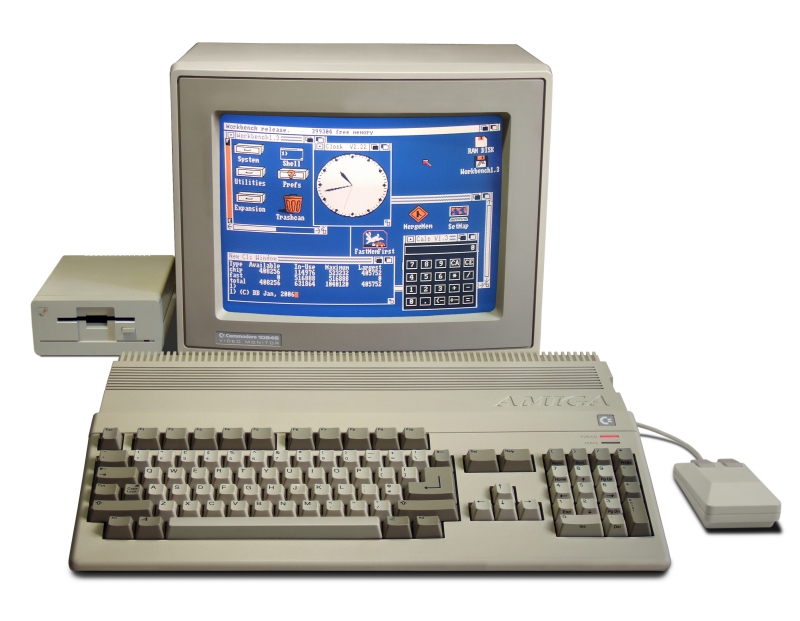
Codenamed Rock Lobster, the Amiga 500 was the original keyboard console Amiga. Released in 1987, it was the budget model after the Amiga product range was split and is essentially an A2000 without the Zorro II bus. It was originally shipped with Kickstart/Workbench 1.2 however later models came with 1.3, and it is 1.3 that is the most common (the difference between the three is a bug fix that allows 1.3 to boot from a hard disk and the removal of a little easter egg but that's another story). The Amiga 500 came with the same M68000 CPU running at 7.1 MHz, 512 kB chip ram onboard, and either the OCS chipset (up to rev 5) or ECS (rev 6 & 8). It was common for the Amiga 500 to have an additional 512 kB “slow” ram upgrade in the trapdoor (the slow ram can be reconfigured to chip ram on most setups if you are happy to use a soldering iron – this is beyond the scope of the article, and not needed for the rev 8 board). The same external expansion port as the A1000 is also available. While electrically identical to the port on the A1000 it is on the left hand side of the machine and upside-down making it geometrically incompatible with the A1000. It was typically used for a hard disk or fast ram expansion.
Amiga 500+
The Amiga 500+ is the successor to the Amiga 500 and is also codename Rock Lobster. Released in 1991, the Amiga 500+ is the ECS version of the Amiga 500 and looks almost identical. It was shipped with Kickstart 2.04 and Workbench 2.0. The new Kickstart caused many games written for the earlier versions to crash, making a Kickstart switcher a popular upgrade – the user can select the 1.2 or 1.3 ROM when playing games but change to 2.0 when running productivity software in Workbench. Like its predecessor, the Amiga 500+ came with an M68000 CPU running at 7.1 MHz, but had 1 MB chip ram onboard, and the ECS chipset. It was possible to add an additional 1 MB expansion in the trapdoor, allowing the A500+ to enjoy the full 2 MB of chip ram. The A500+ also came with an onboard real time clock, including a NiCd battery soldered to the motherboard – more about these in the next article.
Amiga 600
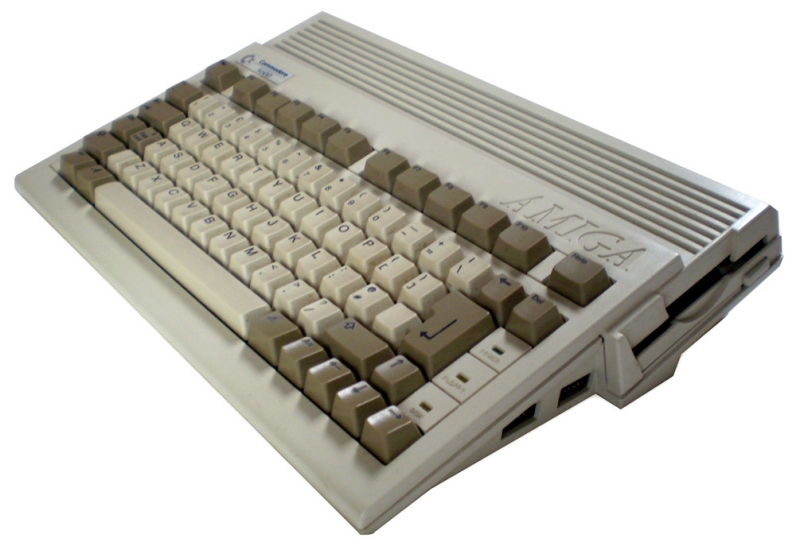
Codenamed June Bug, the Amiga 600 is the baby Amiga. Released in 1992, the Amiga 600 was originally meant to be a low budget redesign of the A500+ and was to be called the Amiga 300; however cost blow outs meant that it cost more and it was marketed as a replacement to the A500+. While it did come with extra features such as an internal PATA IDE port and a PCMCIA port, it was quite unpopular as it was missing features such as the numeric keypad. Like the A500+ it came with an M68000 CPU running at 7.1 MHz, 1 MB chip ram (expandable to 2 MB in the trapdoor), and the ECS chipset. There was also an A600HD variant that came with a 20 or 40 MB internal hard drive and while there is no accelerator port, fast ram can be added in the PCMCIA slot. Being the only Amiga with the CPU soldered to the motherboard and no accelerator port the Amiga 600 is difficult to expand, and very few expansions other than extra chip ram and a real time clock were released for it back in the early 90s. In more recent times expansions such as Vampire and Furia have been released for the A600 and these will be discussed in a future article.
Amiga 1200
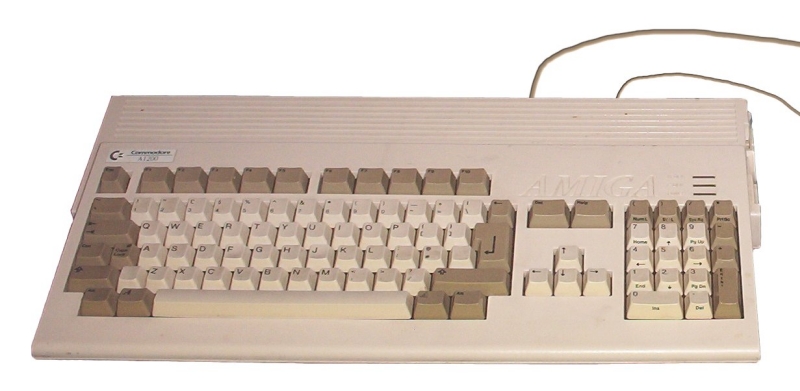
Codenamed Channel Z, the A1200 is the last of the keyboard console Amigas. Released in 1992, it is a significant step up from the earlier Amiga 500 series. The A1200 came with an onboard 68EC020 CPU running at 14 MHz, 2 MB chip ram, the AGA chipset, and Kickstart/Workbench 3.0. It was common for the A1200 to be bundled with an accelerator in the trapdoor, allowing users to enjoy a faster CPU and some fast ram, sometimes with a full 32-bit CPU. Like the A600, the A1200 came with built-in IDE and PCMCIA port was sold with an “HD” variant, with hard disks up to 120 MB. The A1200 was discontinued in 1994 following the bankruptcy of Commodore, but was re-released by Escom between 1995 and 1996 with Kickstart and Workbench 3.1.
TV Consoles
Two Amiga TV consoles were produced – the poorly received CDTV and the too-late CD32.
Commodore CDTV
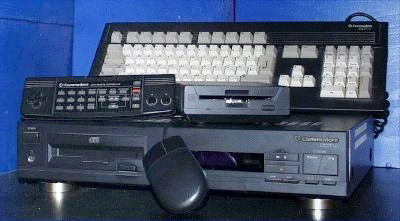
Released in 1991, the CDTV was a high-end multimedia machine rather than a computer or gaming machine and was not marketed as an Amiga. It is essentially an A500+ with a single speed CD Rom and no floppy drive in a nice case that looks like a CD player or VCR. Unfortunately for Commodore and their only real competitor in this market, Philips, the market for high-end multimedia machines with a correspondingly high price tag was pretty small and the machine was a flop. The CDTV came bundled with a remote control that also works like a joystick, Kickstart 1.3, and a special extended ROM containing the CDTV software. Matching black peripherals such as a mouse, keyboard, monitor, and floppy disk drive were available to allow the consumer to turn the CDTV into a fully-fledged A500+ computer. Commodore also released the A570 sidecar which plugged into the Zorro port of an A500 or A500+ to make it work identically to the CDTV, which may have hurt sales, although it wasn't as if A500 users were flocking to their Commodore dealership to buy them either. The sleek black case and black peripherals and their relative scarcity make the CDTV very collectible (read expensive) today.
Amiga CD32
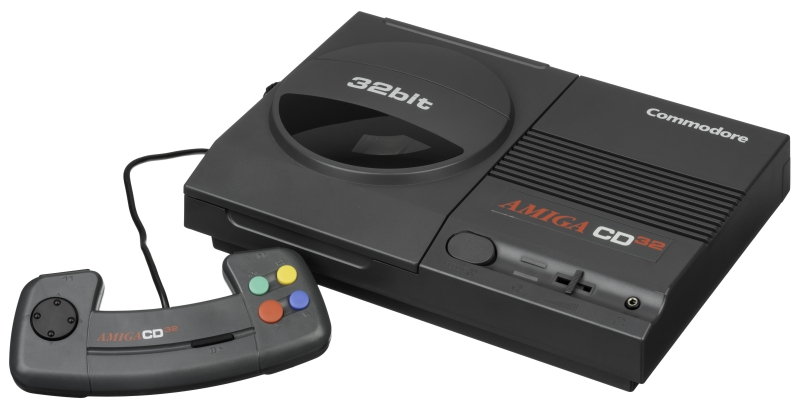
Codenamed Spellbound, the CD32 was a gaming console version of the Amiga 1200. Released in late 1993 the CD32 was the first 32-bit gaming console and was well received – it accounted for over one third of CD Rom drive sales in the UK in the months after its release. The CD32 was released with a large library of games thanks to the massive back-catalogue of Amiga software for previous systems. The CD32 was also the only Amiga to handle chunky to planar graphics in hardware in the Akiko chip [this is useful for 3d gaming on the Amiga]; however with the large existing user base of A1200s without Akiko most developers did not use this feature. Sadly Commodore was in the process of going broke at the time of the CD32’s release in late 1993 and they were unable to supply enough units to meet demand in the UK and Europe. There was also a patent issue which prevented the CD32 from being sold in the USA resulting in a surplus of NTSC machines stuck in the Philippines. The CD32 was discontinued with Commodore’s bankruptcy in 1994.
Big Beige Boxes
The beige boxes represent the “Business” in Commodore Business Machines. They are the high-end Amigas marketed to business users. While they did not sell anywhere near as well as the keyboard consoles they had niche markets, most notably with video editing with the Video Toaster. The Amiga became the work horse of small TV studios and many were still in service until the introduction of digital TV in the late 2000s.
Amiga 2000
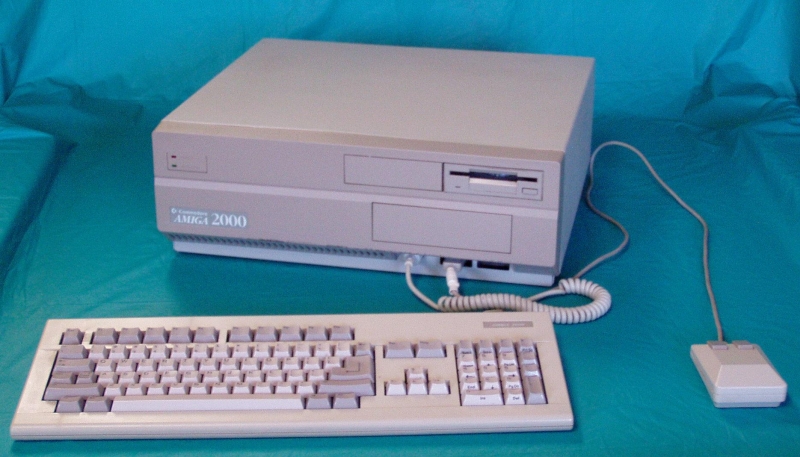
The Amiga 2000 was the direct successor of the Amiga 1000. It was the first Amiga that was able to be expanded internally, with five Amiga Zorro II slots, a video slot, a CPU slot, and two ISA slots [ISA only available if using an XT (8088) or AT (80286) bridge board]. It came in a desktop style case and had two 3-1/2” drive bays and one 5-1/4” drive bay, and was the first Amiga with a built in real time clock. Like its predecessor, the Amiga 2000 featured a Motorola M68000 CPU running at roughly 7.1 MHz. Most A2000s had OCS and KS 1.2/1.3 but with a “Fat” Agnus, allowing either 1 MB or 2 MB chip ram depending on exactly how fat Agnus was. Later A2000s came with ECS and KS 2.04. While the standard A2000 came with a single floppy drive, a hard disk variant called A2000HD was released shortly afterwards and came bundled with the A2090 SCSI card and hard drive. Commodore also released two other variants – the A2500, bundled with a hard disk and M68020 CPU card running at 14 MHz, and a UK only variant named A1500 which was released to kill off a third party case upgrade for the A500. Common upgrades included a faster CPU card, with Commodore producing 68020 and 68030 cards with fast ram, SCSI controller and hard disk, CD ROM drive, AT or XT bridgeboard for IBM PC compatibility (at the time of release it was cheaper to buy an A2000 with a bridgeboard than an IBM PC!), and later on a video card such as the Picasso or even a simple scan doubler.
Amiga 3000 & 3000T
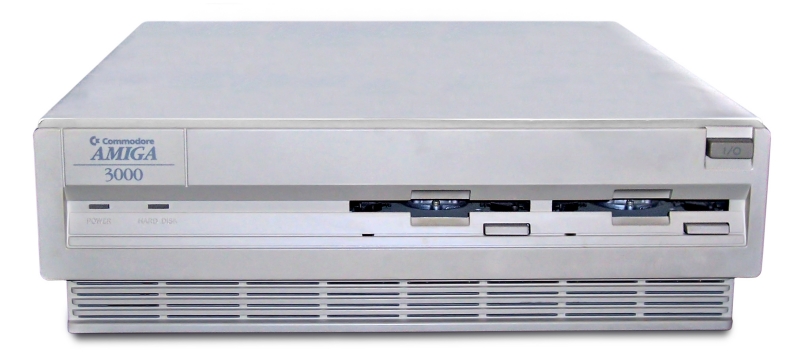
Released in 1990 the A3000 was the direct successor to the Amiga 2000, and was marketed as a top of the line workstation. The standard CPU was the 32-bit M68030 running at either 16 or 25 MHz [roughly equivalent power to an early 80386], running asynchronously with the chip set which was still 16-bit and running at 7.1 MHz. It came with the ECS chip set, 1 MB chip ram (expandable to 2 MB), 1 MB fast ram (expandable to 16 MB onboard plus 128 MB in the CPU slot and a huge 2 GB in Zorro III), four 32-bit Zorro III slots (mostly backwards compatible with Zorro II cards from the A2000), a video slot, a CPU expansion slot, and two 16-bit ISA slots (as with the A2000 these required a bridgeboard), and a built-in flicker fixer/scan doubler called Amber which output a VGA signal. The Amiga 3000 is compatible with both disk and ROM based Kickstarts, with early machines coming with v1.4 soft-Kickstart that was loaded from the hard disk to allow for easy upgrade and if two were installed, to let the user select the OS at boot time. Later A3000s came with Kickstart 2.04 on ROM and Workbench 2.0 or 2.1. There were two variants, the towerised A3000T which allowed more space for expansion, and the A3000UX which came with Unix System V instead of AmigaDos.
Amiga 4000 & 4000T
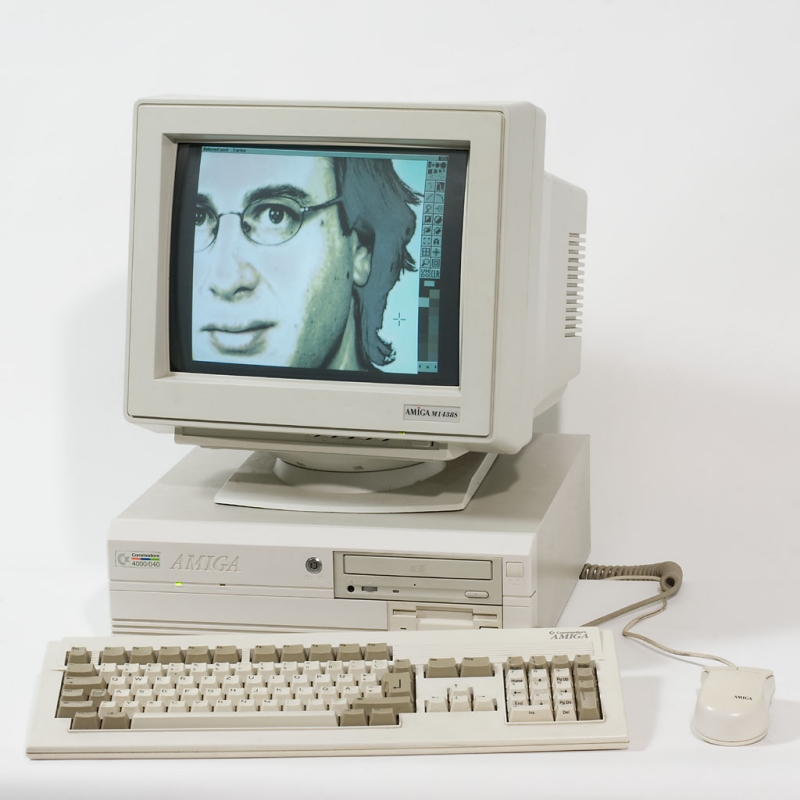
The A4000 was released in 1992 as the direct successor to the A3000, and is the only beige box with AGA. A4000 was first released with an M68040 running at 25 MHz [roughly equivalent power to a later 80386 or perhaps an 80486SX], the AGA chipset, and Kickstart/Workbench 3.0. The A4000 was built with expansion in mind, and are essentially modular in design - early A4000s came with the CPU on a card for easy upgrade options. A later cost-reduced variant called the (wait for it) A4000-CR came with an onboard surface mounted 68EC030 CPU although the CPU slot is still there. RAM was in 32-bit SIMMs on the motherboard, with 2 MB configured as chip ram and up to 16 MB configured as fast ram. In addition a further 128 MB fast ram could be added with a third party CPU card via the CPU slot and up to 2 GB in Zorro III (512 MB per slot). The A4000 replaced SCSI with PATA IDE which was significantly cheaper than SCSI by this stage and came with a 120 MB IDE hard drive. The A4000 was also the only Amiga to come with a standard high density floppy drive (1.76 MB – these are 1.44 MB when formatted for the IBM PC). Internally it came with four Zorro III slots, an AGA video slot, three ISA slots (as with earlier systems this requires a bridgeboard), and the CPU expansion slot; and there were two front-accessible 3-1/2” drive bays, two 3-1/2” hard drive bays, and a 5-1/4” bay. The A4000 was discontinued following Commodore’s bankruptcy in 1994.
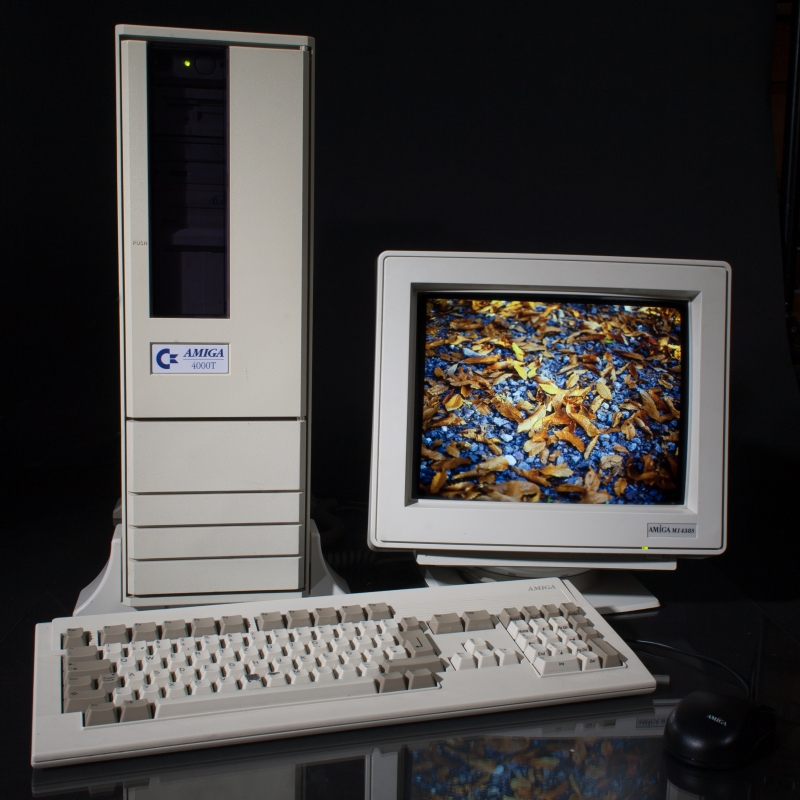
The A4000T (A400T/040) was released by Commodore in 1994 and featured an AT form factor motherboard (the only Amiga to have a PC form factor motherboard; presumably to reduce the cost by allowing the use of standardised parts). It featured an M68040 CPU running at 25 MHz, onboard SCSI and PATA IDE, two video slots, five Zorro slots, four ISA slots, one internal and five 5-1/4” front accessible drive bays. The A4000T was released in 1994 shortly before Commodore’s bankruptcy making Commodore-built machines extremely rare. Escom and later QuikPak produced the A4000T/040 and an A4000T/060 featuring a 68060 running at 50 MHz [roughly equivalent power to an 80486 DX] until 1997.
Final words and acknowledgement
This article was intended to include technical information about the Amiga chipsets, the three different types of RAM, introduce the Zorro bus, talk about some of the things to watch out for, and cover basic troubleshooting. Given the large amount of ground to cover it ended up extremely long so it has been split in two, and will be the topic of the next article.
The author would like to acknowledge three incredible tomes of knowledge, without which this article would not have been possible. In no particular order, thank you to the Big Book of Amiga Hardware, the Amiga Hardware Database, and the Amiga Museum. All three were heavily relied on for research and verification of what is written here. All the photos are blatantly plagiarised from Wikipedia.
https://www.bigbookofamigahardware.com/Default.aspx
http://amiga.resource.cx/
http://theamigamuseum.com/
https://en.wikipedia.org/
About the author
Articles in « Amiga Beginner's Series »
Comments

-
 AMIGA/040 - Amiga 40th An...
by Marcio D.
AMIGA/040 - Amiga 40th An...
by Marcio D.
[March 12, 2025, 10:30:36 am] -
March 2025 - Belial by NinjaKat
[March 06, 2025, 06:14:33 am] -
February 2025 - Cave Runn... by NinjaKat
[March 06, 2025, 06:05:51 am] -
AmiExpress (/X) BBS Runni... by intangybles
[March 01, 2025, 10:02:34 pm] -
Welcome to the new BBS In... by intangybles
[March 01, 2025, 09:57:06 pm] -
Amiga Retro Brisbane BBS ... by intangybles
[March 01, 2025, 09:49:47 pm] -
 3D Library for PiStorm-eq...
by Marcio D.
3D Library for PiStorm-eq...
by Marcio D.
[February 27, 2025, 09:46:23 am] -
 SHADOW GANGS ZERO - Retro...
by Marcio D.
SHADOW GANGS ZERO - Retro...
by Marcio D.
[February 12, 2025, 08:19:29 am] -
 Vision BASIC v1.1 - Major...
by Marcio D.
Vision BASIC v1.1 - Major...
by Marcio D.
[February 05, 2025, 05:26:52 am] -
January 2025 - Advantage ... by NinjaKat
[February 01, 2025, 06:42:23 am]
TinyPortal 1.6.4 © 2005-2019







